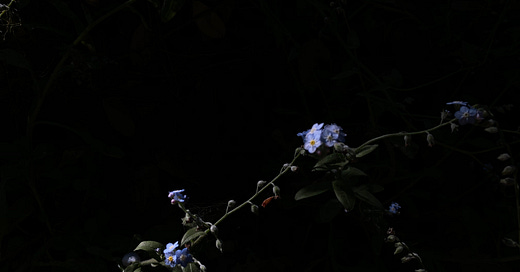Research
Things have begun to pick up for this agriculture project, in which I’m researching how to align financial and environmental incentives for farmers and ranchers. My initial hypothesis earlier this year was about groundwater trading; this evolved to reducing all regulatory burden for farmers, with a focus on record-keeping and paperwork for water regulations in the American West. In June, I spoke to several farmers and ranchers, as well as agronomists, crop advisors, and agtech founders. I’ve learned a bunch of things, including these key takeaways:
There is a real crisis in farmer profitability across the U.S. right now
Call and text is way more effective than email for getting in touch with folk
Agronomists / crop advisors are excited about the mission of “aligning financial and environmental incentives for farmers” and are interested in figuring out what partnership opportunities make sense with this work
I’m starting to explore streamlining grants / government incentives as well as regulations. Some early conversations seem to suggest that “Main Street for farms” > “TurboTax / Gusto for farms”, because it better enables farmer profitability (“make more money” versus “save time / money”)
I should do more serious research on how to build software that helps ranchers track and increase their cash flow per AF of water used
For our regulatory research and prototyping, we’re going to focus our efforts on upcoming water quality regulatory deadlines for North Coast dairies.
Interact is putting together a new program called Interact Circles, a 4-month program where small groups of Interacters form a “Circle” to accomplish a shared goal or deliverable. I proposed an agtech Circle in June and received unexpectedly strong interest from the community; in our Circle, there is a professor at UMD focused on machine learning for agriculture imagery, several current and aspiring agtech founders, a product designer who has gotten really into gardening, a former investor from Kleiner who focused in part on agtech, and more. We also have a fairly significant budget to travel for user interviews, build projects, or otherwise conduct research. We’re launching that program this month.
I’ve decided to focus more of my time on this agriculture project, meaning I am officially transitioning away from day to day work on The Next 50. I will still be an advisor to Zak and the team. Some shout outs from June — they hosted several successful fundraising events, including raising $30K for Jaime Harrison and $10K for Desiree Tims.
I also have good news from my submitted manuscript on climate change beliefs in the U.S. military – I received a fairly positive peer review, and I am working to address the reviewer comments and resubmit to the journal by mid-July! Fingers crossed.
Personal
It’s going to be a lovely summer. I’m going to split my time between San Francisco – working on my growing balcony garden – and Stanford, in my old house, which has a beautiful rose garden in full bloom.
I’m putting together a socially distant July / August trip to California tide pools with about half a dozen folk who are interested. I asked everyone to order this guide to take along. Our treasure hunt is to find a starfish! I wanted to take us to Fitzgerald Marine Reserve, but the tide pools are currently closed – it’s hard to get in contact with the folk who would know the latest updates about openings, but I found these random parks and reserves are fairly responsive via their Facebook pages. I’m researching a few other places and just need to determine a weekend date that has a low tide at a reasonable hour. I’m also thinking about organizing a crabbing trip in Pacifica, based on Sara’s tweet.
Earlier in June, I went for a picnic hike with Kevin in Purisma Creek Redwoods Preserve – a dramatic hike with fog rolling in off the ocean in the valley below, moss-covered trees, and a variety of bird and plant life. I identified about a dozen species of wildflower, including forget-me-nots along the trail. I love trying to figure out species of trees or birds or flowers you might see along a hike, or seashells you might find along the beach; I think it adds such a layer of depth to your experience of nature.

Finally, something more difficult for me: a close family member on my Indian side passed away last weekend. I’ve found a lot of unexpected comfort in two things: first, in Hindu funeral traditions, which emphasize ritualized and collective grieving as a family – for example, daily bhajans. Second, in Hindu religious myths, which draw deeply from nature and thus enable discovery of spiritual symbolism everywhere – for example, if you see a certain animal, you could interpret it as a sign from that animal god related to the person’s passing. The week also made me re-appreciate having such cultural depth and support network from a large Indian family, scattered around the world, but brought together even in a pandemic over Zoom and texts and email. I love you, masi!
Best,
Mackenzie



